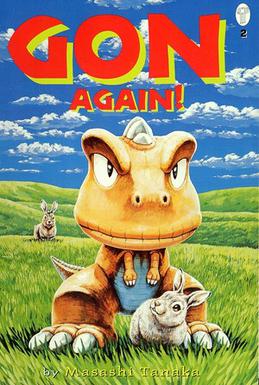July 17, 2015
When I Was a Kid…
I have, admittedly, been trying to turn my kids into nerds since slightly before they were born. Comics and graphic novels have been part of our bedtime routine since before they were age-appropriate, and there was a mushy time a year or so ago where it looked like my intentions had backfired and the elder child was having nightmares about Bone‘s rat creatures. (I am not the world’s best mom – maybe only second or third best.)
But this year, all of those sewn seeds have taken root and flowered in a most spectacular way. It helps that the comic market for the under-ten set has exploded. It also helps that some of the best and brightest comic creators in the world are trying their hands at children’s picture books with wonderful results. Even mega-best-selling and award-winning children’s book franchises like Mo Willem’s Piggie and Gerald books are essentially gateways into comics. You’d have to be childless under a rock not to be swept into – well, not just comics, but excellent comics.
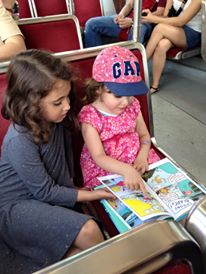
M&O love, LOVE James Kochalka’s Dragon Puncher books.
I brought my two daughters – now 7 and 4 – to the Toronto Comics Arts Festival this year, where for the first time they led the way. They spent every penny of their own hard-earned money on books, sketches, bookmarks and buttons. We still have books on the shelf we haven’t tried yet, distracted, as they are, by their favourites.
I’ve learned a lot. #1 thing is that what I like and what they like are two very different things. This sometimes leads to fights at storytime, power struggles over whether we’re going to read Moomintrolls or whether I have to drag myself through Power Ponies again. Nevertheless we agree on a number of gems, a lot of them new, so I’ve assembled a little roundup below.
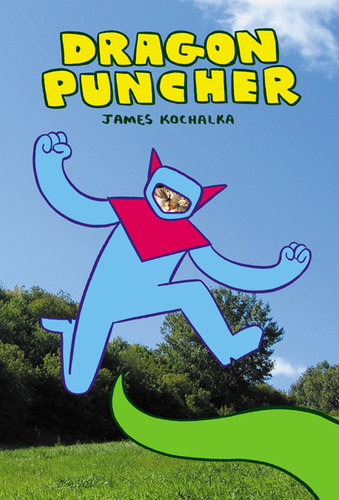 Dragon Puncher by James Kochalka
Dragon Puncher by James Kochalka
Kid’s Rating – 5 stars
Mom’s Rating – 5 stars
These are short, simple and thoroughly tongue-in-cheek comics about the titular hero (played by Kochalka’s cat, Spandy) and her self-appointed sidekick, Spoony-E (played by Kochalka’s son.) I was reluctant to buy them because they didn’t seem to have much substance to them, but they are hilarious. Good old slapstick, absurd premises taken seriously, and innocent fun make this pretty much the ideal small-child indie.
Kid’s Rating – 3 stars
Mom’s Rating – 4 stars
I wanted to like this one. A high-fantasy adventure starring a stubborn, resourceful girl of colour with a pet dragon and a mission to save her sisters? Sign me up!
And it is amusing – for me. The kids? Well, the younger one liked the dragons and action. But most of it went right over their heads. Princeless draws a lot of its humour from subverting existing Disney/comic/fantasy tropes about the roles of women and princesses – tropes my kids know nothing about. The idea that a princess needs a prince to come save her? Yup, my kids heard it first here. It’s possible that kids better-acquainted with Disney will get the jokes, but mine were just lost.
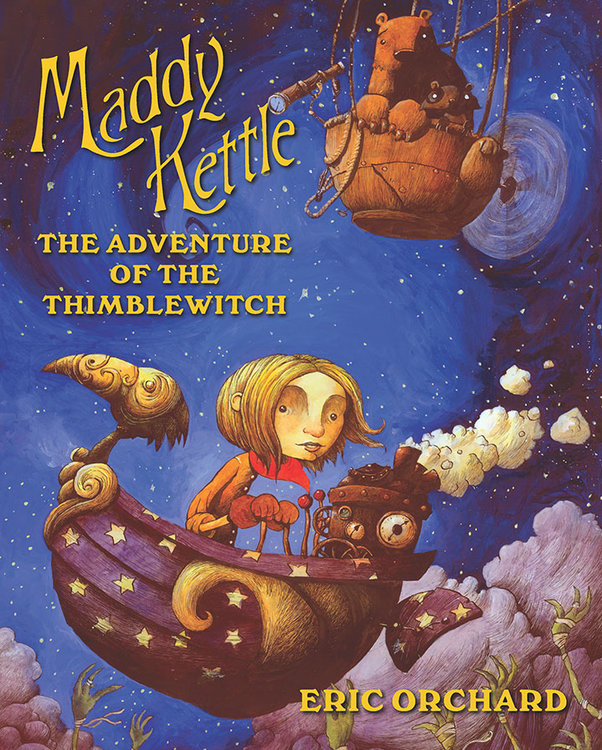 Maddy Kettle: The Adventure of the Thimblewitch by Eric Orchard
Maddy Kettle: The Adventure of the Thimblewitch by Eric Orchard
Kid’s Rating – 4 stars
Mom’s Rating – 3.5 stars
This is a beautiful book. So beautiful that my kids refused to read it for the first few months because the strange creatures and eerie setting were “scary.” I was enchanted and eventually just started reading it myself, and, like cats, my children wound up on my lap reading along. They loved it.
But a few pages in, I found myself frustrated with the storytelling. The plot moves too fast and there isn’t a lot of character-building. My kids didn’t care. The images and ideas were perfectly-paced for them. I can see how this book has captured their imaginations, even if I felt it could have been written better. A surprise little-kid hit.
Kid’s Rating – 5 stars
Mom’s Rating – 3 stars
Strip-style comics about a group of friends doing pretty ordinary things. These are funny, I guess – funnier to the kids than me. I found the comic a bit mean. The characters are all sort of jerks to each other. My kids don’t care. They think these are hilarious. The friends never seem to really hold any grudges and they do all kinds of interesting things together… so I guess I should chill out about their jerkiness. Maybe that’s just “real.” Anyway, I’m torn on this one. The kids love it but the interactions leave a bad taste in my mouth.
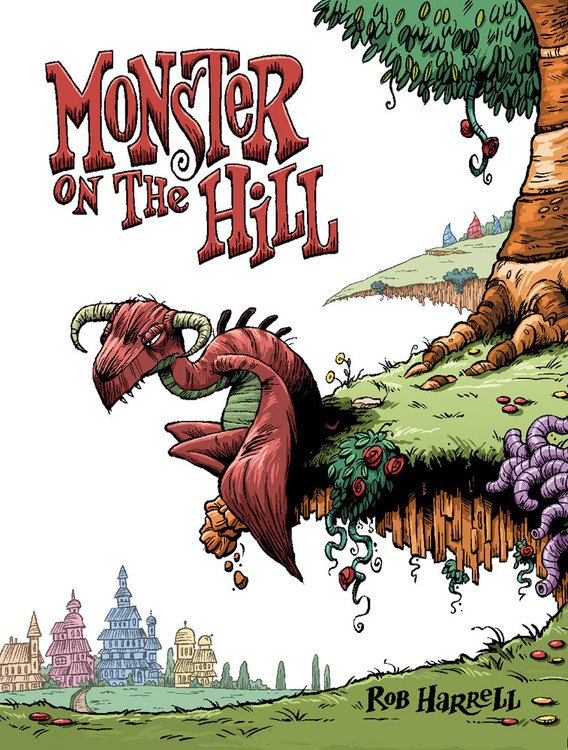 Monster on the Hill by Rob Harrell
Monster on the Hill by Rob Harrell
Kid’s Rating – 5 stars
Mom’s Rating – 4.5 stars
This was an unexpected hit. This is the story of a “lame” monster who lacks the self confidence to monster properly. The town he is meant to be terrorizing is pretty disappointed in him and send up a doctor to “fix” him. Adventures ensue.
Author Rob Harrell is probably better known for having inherited the abjectly terrible daily syndicated strip, Adam @ Home, which immediately put me at my guard. But the art in Monster is so lush and the world so fantastically fun that my reservations were swept away. The humour is occasionally pretty lame in a way that was over the kids’ head, but it didn’t distract too badly. My only major complaint is the total lack of any female characters at all. The kids have no complaints and have read this thing into the ground.
Kid’s Rating – 4 stars
Mom’s Rating – 3 stars
Gon is a wordless comic (like Andy Runton’s popular Owly) about a baby dinosaur in our own world, living in various biomes and befriending and/or terrorizing the animals there. My elder child, obsessed with nature and animals, loves these to pieces. They are gorgeously-drawn and expressive, featuring lots of really interesting real-life animals we never see.
On the other hand, I find wordless comics – even Owly – exhausting to “read” to the kids. These are dramatic performances, not readings. I look forward to my kids being willing to sit alone with these, rather than wanting my involvement.
 My Little Pony by various committees
My Little Pony by various committees
Kid’s Rating – 4+ stars
Mom’s Rating – 3-4 stars
Okay, not exactly high literature, here. But it would be misleading for me to suggest my kids are reading all these great books without owning up to the fact that we have read 10+ volumes of pony comics to pieces over the last two years. They love them. They can’t get enough of them. They rush to the pony shelf first thing when we get to the comic shop. Le sigh.
But, okay, as far as mainstream brands go, MLP is really not bad. The “mane six” ponies are well-developed, strong, interesting characters with relatable strengths and weaknesses. They go on incredibly epic adventures of every conceivable kind. The comics give more nods to adult readers than the cartoons do – they are probably written for the adult fan base, not younger kids. Lots of visual geek gags including some incredibly meta Discord/Q (from Star Trek) jokes. MLP’s major weakness is a big racial blind spot (yah yah, the ponies are a rainbow of colours. But they are also all white. Zecora the Magic Negro Pony is a zebra and there are indigenous bison. The clear implication is that ponies are white, white, white.) Later seasons of the cartoon have tried to de-white the state of ponyness, but it’s still pretty lame.
But wait, there’s more! A lot more. If you’ve fallen out of touch with comics and think Marvel/DC is all there is to offer, I really recommend you get yourself to a comic book shop – any comic book shop – with haste. I’ve barely scratched the surface of what we have on my kids’ bedstand here, let alone what is available in stores. Some of the most imaginative work in any genre is being done in this medium, in my humble opinion. It’s worth catching up.
April 15, 2014
Five Great Heroes for Small Girls
Navigating media with a young girl can be a disheartening experience. If you think representation matters, like I do, you’re constantly on the lookout for smart, confident, diverse girls represented in interesting ways. They can be hard to find, but not impossible. Six years in, I have built a small but sturdy library.
Pippi Longstocking
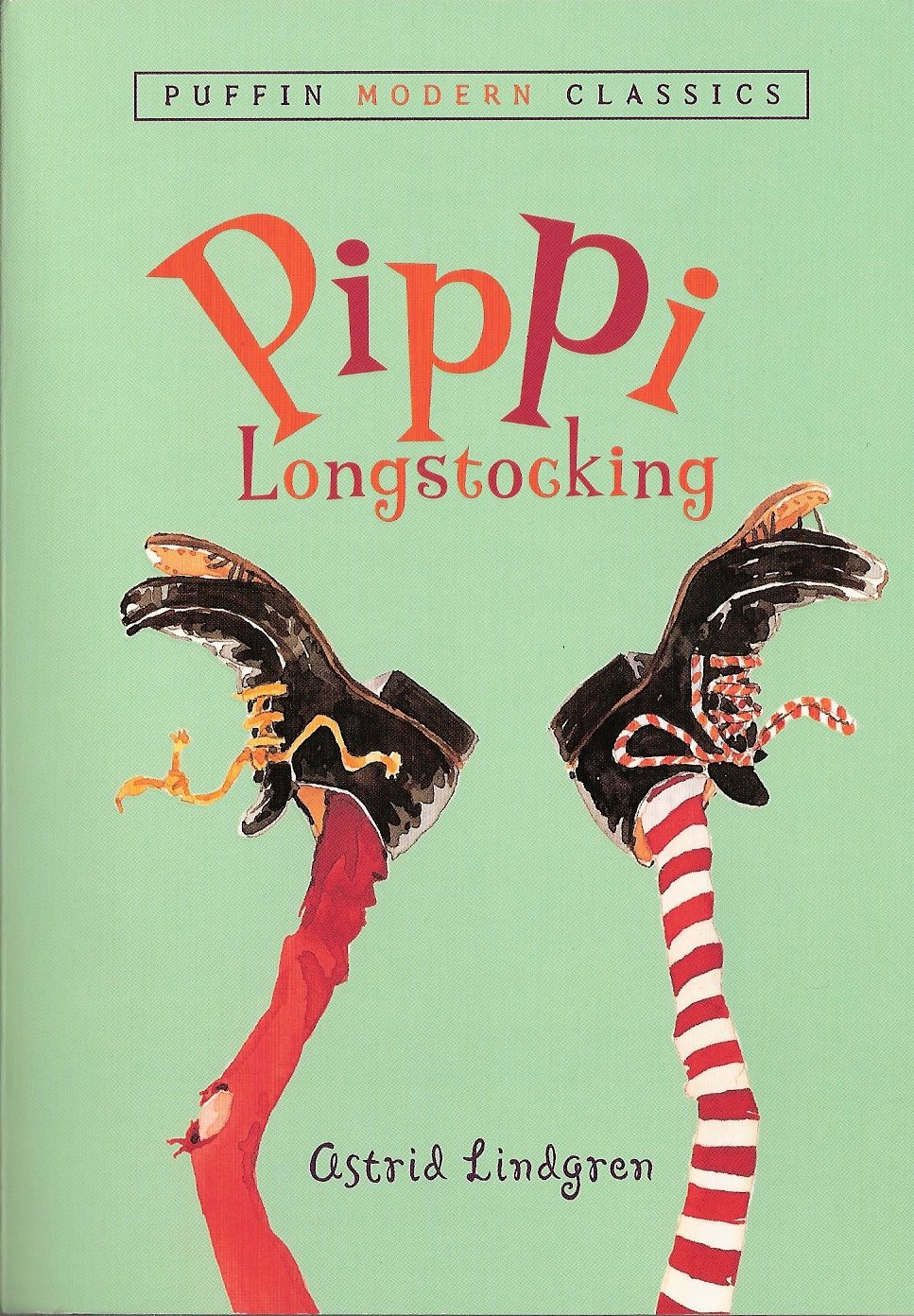 Pippi Longstocking, the hero of Astrid Lindgren’s eponymous books, was my #1 most favourite female hero for kids before I actually had kids. There were very few characters I, personally, identified with more when I was eight. Pippi lives alone with a horse and a monkey. She has incredible super-strength, which is neat, but not nearly as enticing as her independence. She has a father somewhere, distantly, who is a buccaneer captain. Pippi isn’t bothered by her father’s absence since he is alive and merely busy having adventures, so Pippi’s feral independence isn’t darkened in any way by loss or grief. She just straight up gets to do anything she likes, and does.
Pippi Longstocking, the hero of Astrid Lindgren’s eponymous books, was my #1 most favourite female hero for kids before I actually had kids. There were very few characters I, personally, identified with more when I was eight. Pippi lives alone with a horse and a monkey. She has incredible super-strength, which is neat, but not nearly as enticing as her independence. She has a father somewhere, distantly, who is a buccaneer captain. Pippi isn’t bothered by her father’s absence since he is alive and merely busy having adventures, so Pippi’s feral independence isn’t darkened in any way by loss or grief. She just straight up gets to do anything she likes, and does.
Mosca Mye
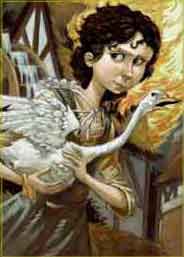 Mosca Mye is the hero of Frances Hardinge’s incredible books, Fly By Night and Twilight Robbery. Another lone, independent 12-year-old, Mosca does have a darker past, and it adds a definite edge to her character. Razor-sharp, Mosca escapes her dull relatives after sort-of-accidentally-on-purpose burning her uncle’s barn to the ground and freeing the loquacious conman, Eponymous Clent, who comes to be her partner in crime. She also has a goose named Saracen, who is the fiercest creature in all the world. Mosca’s not old enough to have lost a childlike innocence, despite her street smarts, and she survives all sorts of dangerous encounters on wit alone. Bonus points for major themes of literacy!
Mosca Mye is the hero of Frances Hardinge’s incredible books, Fly By Night and Twilight Robbery. Another lone, independent 12-year-old, Mosca does have a darker past, and it adds a definite edge to her character. Razor-sharp, Mosca escapes her dull relatives after sort-of-accidentally-on-purpose burning her uncle’s barn to the ground and freeing the loquacious conman, Eponymous Clent, who comes to be her partner in crime. She also has a goose named Saracen, who is the fiercest creature in all the world. Mosca’s not old enough to have lost a childlike innocence, despite her street smarts, and she survives all sorts of dangerous encounters on wit alone. Bonus points for major themes of literacy!
Zahrah the Windseeker
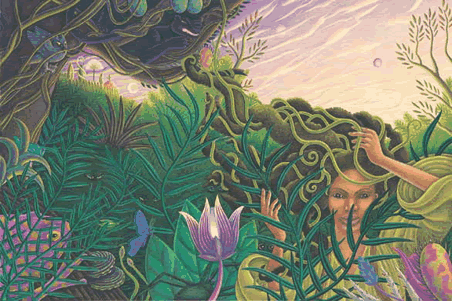 I’m partial to bold, independent heroes, but my elder daughter is a different creature. Adventures are scary to her, even when they come out well in the end, and so she instantly attached herself to Nnedi Okorafor-Mbachu’s Zahrah the Windseeker (winner of the 2008 Wole Soyinka Prize for Literature in Africa). Zahrah’s a shy, contemplative 13-year-old who is absolutely reluctant to go charging off into danger. She needs to think, internalize and understand – and occasionally be given a final firm shove. But she has strength of character and wisdom beyond her years, not to mention SHE CAN FLY, which is obviously amazing.
I’m partial to bold, independent heroes, but my elder daughter is a different creature. Adventures are scary to her, even when they come out well in the end, and so she instantly attached herself to Nnedi Okorafor-Mbachu’s Zahrah the Windseeker (winner of the 2008 Wole Soyinka Prize for Literature in Africa). Zahrah’s a shy, contemplative 13-year-old who is absolutely reluctant to go charging off into danger. She needs to think, internalize and understand – and occasionally be given a final firm shove. But she has strength of character and wisdom beyond her years, not to mention SHE CAN FLY, which is obviously amazing.
Kiki
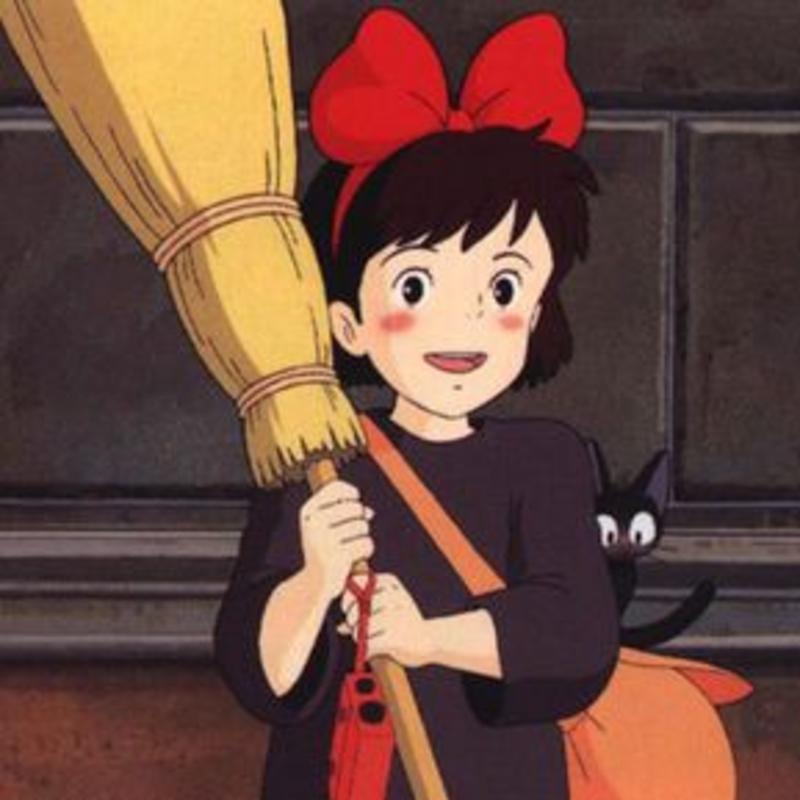 It would be easy to make this a list of characters from Hayao Miyazaki’s Studio Ghibli films, but let’s stick to one. Kiki is probably the strongest of Miyazaki’s characters. The film is about her and her growth as a character, and very little else. But it’s enough. Kiki’s independent, but less sure than some of the more assertive characters. She’s a witch, but she doesn’t know what her special skill is yet, and she quickly learns she isn’t as rich or fancy as other girls in the big city she has chosen to live in. Her fears and struggles are terrible relatable, though Kiki never sacrifices her fundamental goodness. Though she’s almost a young woman, the film’s lack of a “bad guy” makes it wonderful for kids of any age.
It would be easy to make this a list of characters from Hayao Miyazaki’s Studio Ghibli films, but let’s stick to one. Kiki is probably the strongest of Miyazaki’s characters. The film is about her and her growth as a character, and very little else. But it’s enough. Kiki’s independent, but less sure than some of the more assertive characters. She’s a witch, but she doesn’t know what her special skill is yet, and she quickly learns she isn’t as rich or fancy as other girls in the big city she has chosen to live in. Her fears and struggles are terrible relatable, though Kiki never sacrifices her fundamental goodness. Though she’s almost a young woman, the film’s lack of a “bad guy” makes it wonderful for kids of any age.
Zita the Space Girl
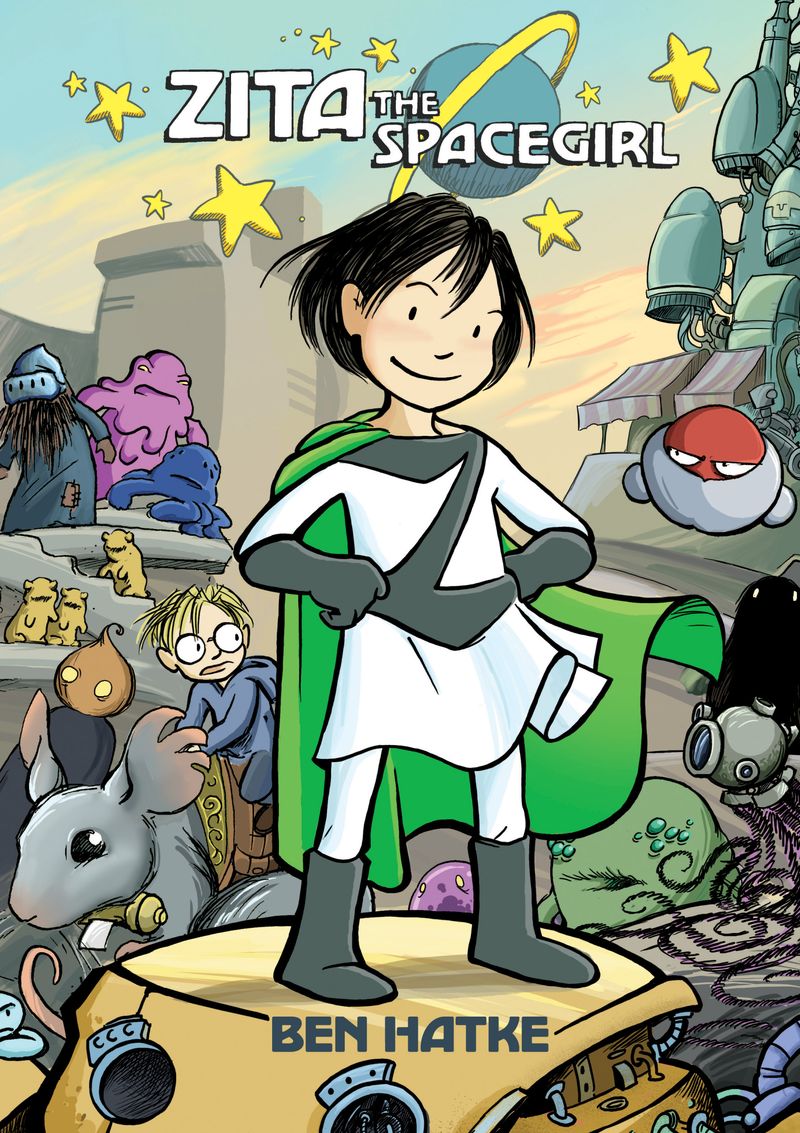 Ben Hatke’s Zita the Spacegirl (along with the sequels Legends of Zita the Spacegirl and The Return of Zita the Spacegirl) has pretty much everything you can ask for in space opera, pared down to the innocent scale of a young girl. Zita has arrived on a strange planet via a portal triggered by her best friend. He’s abducted: she dives through to rescue him. Instantly she’s thrown into huge, galaxy-spanning plots, con artistry, large scale rescue missions, desert crossings, overthrowing governments, salvaging robots, riding giant mice, standing up for economic refugees – have I missed anything? Probably – Zita almost has too much going on, but this never bothered my kids. Zita’s powers are pluck and the moral high ground – and it works.
Ben Hatke’s Zita the Spacegirl (along with the sequels Legends of Zita the Spacegirl and The Return of Zita the Spacegirl) has pretty much everything you can ask for in space opera, pared down to the innocent scale of a young girl. Zita has arrived on a strange planet via a portal triggered by her best friend. He’s abducted: she dives through to rescue him. Instantly she’s thrown into huge, galaxy-spanning plots, con artistry, large scale rescue missions, desert crossings, overthrowing governments, salvaging robots, riding giant mice, standing up for economic refugees – have I missed anything? Probably – Zita almost has too much going on, but this never bothered my kids. Zita’s powers are pluck and the moral high ground – and it works.
*
I’ve had a thing or two to say about good representations for young girls before, and my essay “The Princess Problem” is now available as part of Jim C. Hines’ Invisible: Personal Essays on Representation in SF/F. Proceeds from the sale of the book will be donated to Con or Bust, a fund administered through the Carl Brandon Society that helps get people of color/non-white people to attend SFF conventions. Take a look! Excellent work within.
February 13, 2014
Representing Daddy
Because my children are very small, they do not, at this stage, look for themselves in books. Their brains don’t work like that yet – they take themselves for granted, since they are the centre of the universe, and they look instead for the people they see around them. Oonagh, who is two, likes to find Maggie, who is five. They point out when characters look like Mommy. And they get very special delight out of finding Daddy.
Not that it happens very often. Daddy doesn’t turn up in books very often, and when he does, he’s not the guy you want to root for. Among the characters my kids have identified as “daddy”:

Jafar, from Aladdin
.jpg)
Scar, from The Lion King
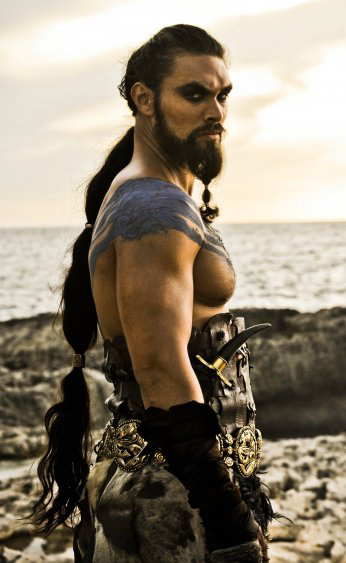
Mommy wishes, kid.
My children are generally perplexed by the daddies they see in books, who, at best, they identify as being their Uncle Gordon. They tend to be pudgy, pale, balding fellows who look like this:

I am a big believer that representation in media matters, especially to children. Kids learn from books. That’s why we read to them so willingly. I am constantly on the lookout not just for books that represent the kids in diverse ways, but the families as well. Kids can learn to be ashamed of or embarrassed by their family situation at a shockingly young age, and I’m keen to head that off at the pass. Your daddy isn’t a bad guy, girls, no matter what Disney likes to say.

I have recommended Jill Thompson’s Magic Trixie here before, but it has recently re-emerged as a favourite in this house. Maggie recommended it for Keep Toronto Reading two years ago.
I have a lot of reasons for loving Magic Trixie, as a geeky parent. It’s a graphic novel, a form intrinsic to my childrens’ nerd heritage. It features cool, quirky children depicted in age-appropriate ways, unlike the similar-but-actually-completely-reprehensible Monster High brand. It’s funny, readable and beautiful. It shows a variety of (admittedly heteronormative) families of many colours and, best of all, the daddy looks like Daddy.
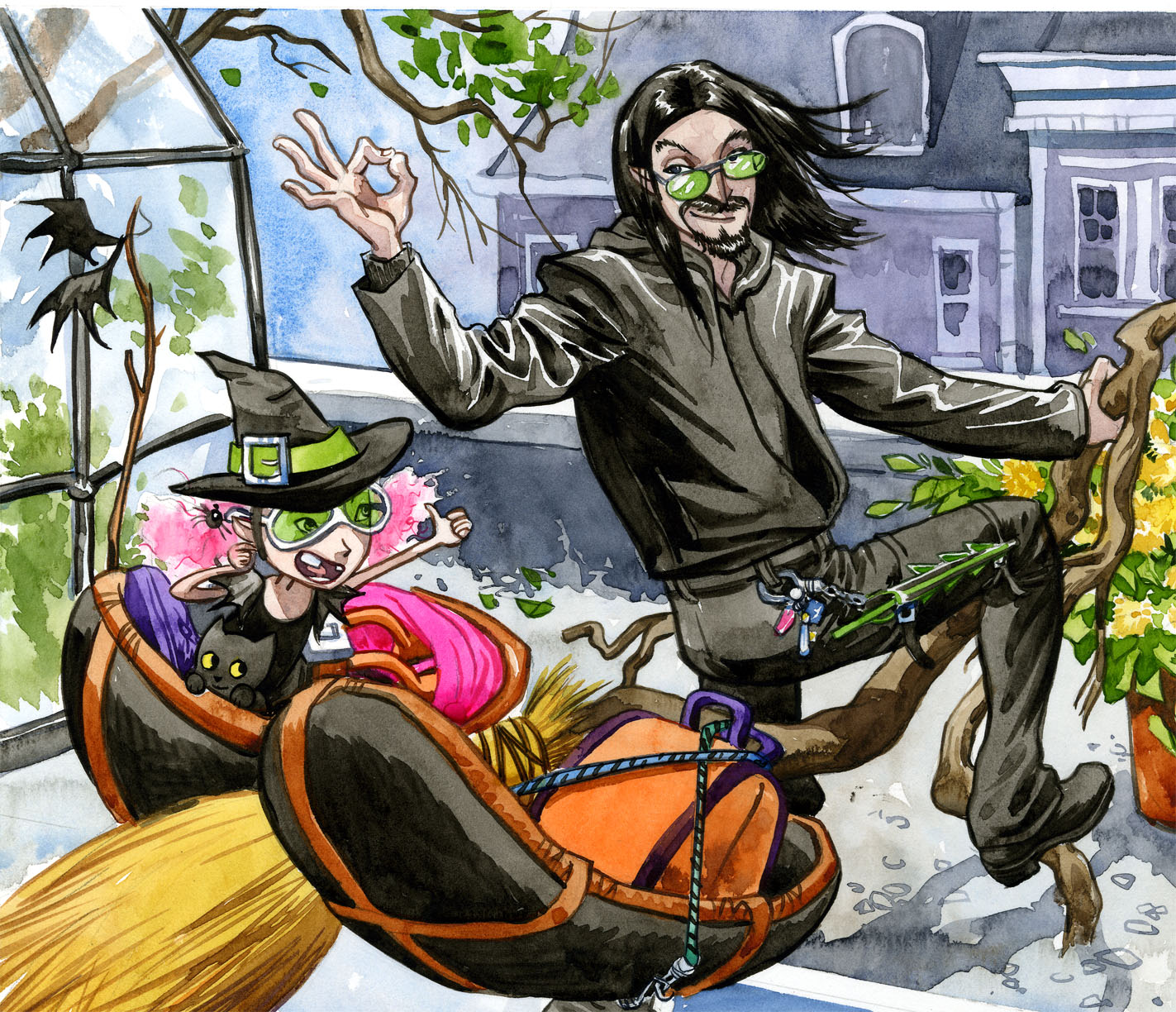
Though, real Daddy does not, sadly, ride a bitchin’ broom.
Fighting the tide of crummy media representation is a huge chore, made harder if you have specific characters you are looking for in your stories. Kids don’t need to see their family everywhere, but when they see families depicted in only one way over and over – they get the message. We’ve tried to balance things in our house.
Pop over to Jim C. Hines’s blog and read his ongoing series of guest-posts about representation. There are some heartbreaking stories, but also some fantastic recommendations. However you or your family identify, there is great fiction to identify with. The trick is just finding it.

See? Not at all evil. Maybe a little evil. In a fun way.
February 6, 2013
That Little Something Extra

Yours humbly.
It was a random act. Last spring I contributed to an Indigeogo campaign to help Irish cartoonist Dale O’Flaherty get to TCAF. I had no idea who Dale was, nor was I familiar with his work, but his Tumblr was cute and it was cheap to pitch in. Shouldn’t everyone have the chance to hit the awesomeness that is TCAF? So I kicked in a bit.
Cartoonists? I love them. What is it about the ability to draw thrifty, expressive little people that makes a creator so darn likable? Not only did Dale draw for me the sketch on the left (a portrait I now use as my Twitter avatar), but this week he mailed me both of his mini-comics and, once again, there was that personal touch:
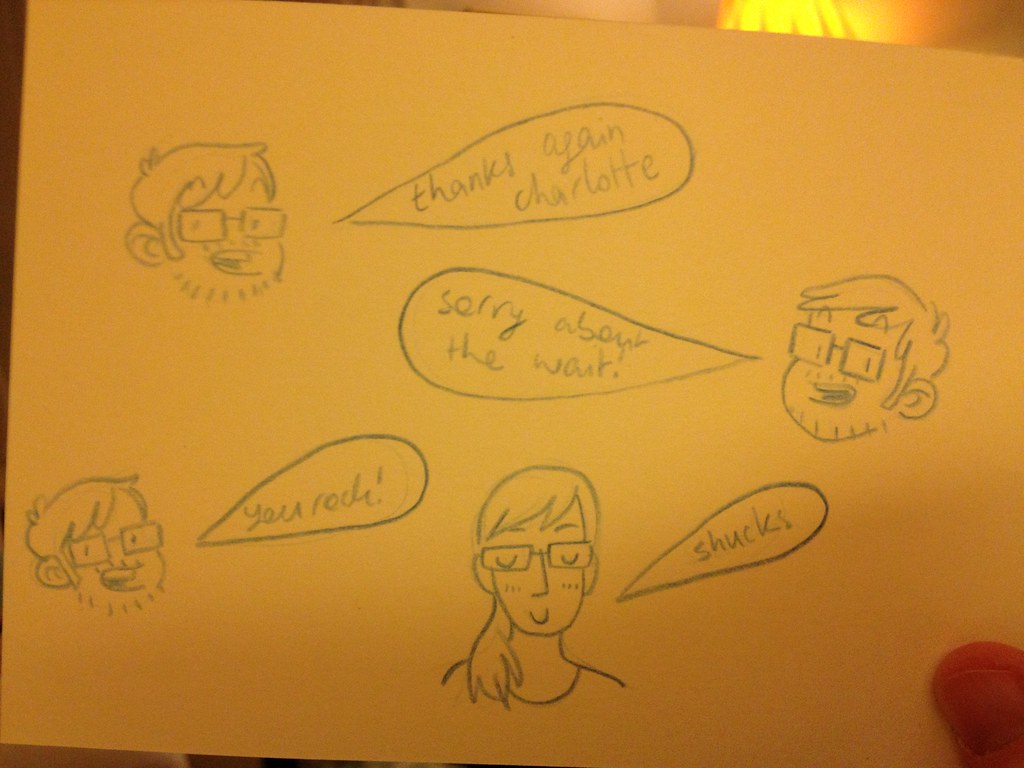
I have long held that this is part of what makes collecting comics or graphic novels so fun. Most writers will sign your book. If you’re lucky, they will “personalize” the signature with a vapid little “Hope you enjoy the book, Charlotte!”. It is often uninspiring, whereas there is something really special about a personalized drawing.
A lot of it is that most of us can’t draw ourselves, and so those little sketches are a bit of magic. It’s something to treasure that nobody else could have done, and nobody else can have. Can words hold the same magic? Short of writing a limerick in the flap of every book you sign, can a writer offer the same fan service?
I want to say yes, because I do believe that writing is as much a skill as drawing, dancing, coding or welding. A good writer has a power the average person does not have. So is there a way to personalize and to share that skill? To reduce writing to tiny parcels that can be created on the fly for any anxious fan?
Tweets? Bitty poems? Or are those little notes that I heartlessly labelled “vapid” above valued and treasured by the fan? What can a writer give only you that will make you treasure their work always?
March 5, 2012
So Many Autobiographical Graphic Novels (A Mini-Review)
When I last visited Little Island Comics, it was with the intention of buying one, small book for my daughter and getting out of there. That wasn’t what actually happened: what actually happened was I stacked up books until I reached my carrying capacity. I had avoided visiting a comic shop of any kind for months because I am so very far behind on my reading, but all that meant was that there were months worth of books which had come out that I desperately, desperately needed to own. And this was just at the kid’s comic book shop. I couldn’t bring myself to look at the grown-up stuff.

My current graphic novel to-read pile.
I resolved when I got home to start ploughing through the pile. After all, even the densest, most literary graphic novel is still mostly pictures and reading one is actually only a commitment of, at the most, a day or two.
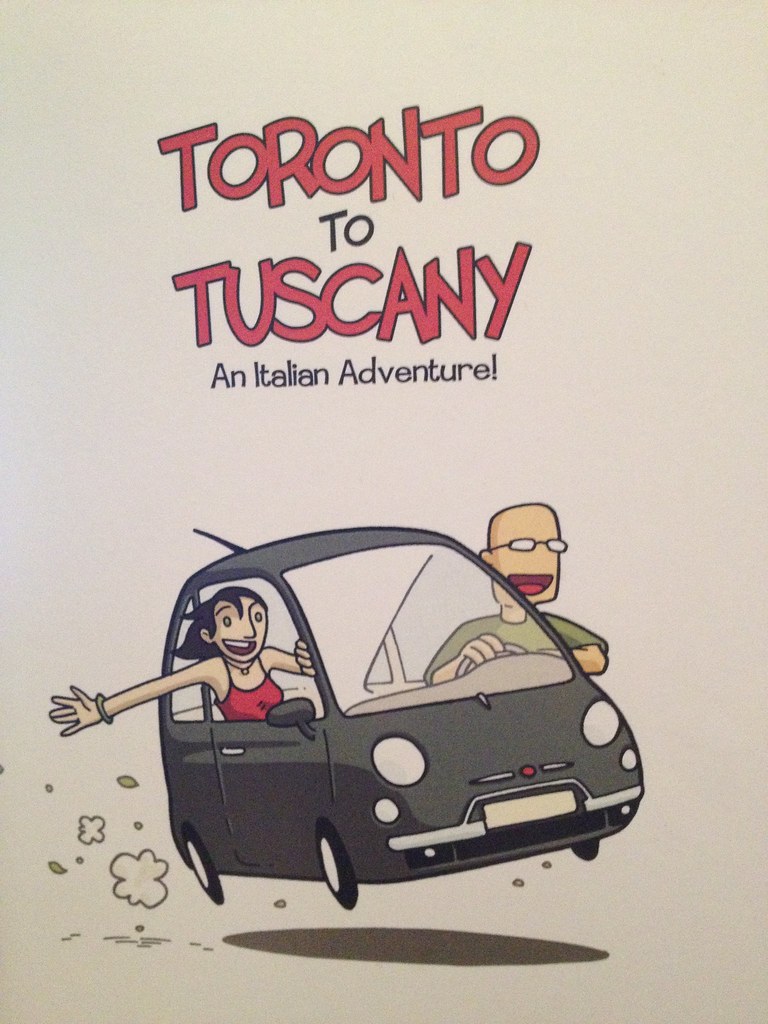 My first-pick was Kean Soo & Tory Woollcott‘s self-published Toronto to Tuscany: An Italian Adventure. This isn’t a book, per se; just a little 32-page mini-comic. But I like to pick my reads in part by serendipity. We’d met Tory the day before at Little Island (where she apparently works) and my daughter is currently going through a Jellaby phase. Toronto to Tuscany had been on my shelf since last year’s TCAF so, really, its turn had come.
My first-pick was Kean Soo & Tory Woollcott‘s self-published Toronto to Tuscany: An Italian Adventure. This isn’t a book, per se; just a little 32-page mini-comic. But I like to pick my reads in part by serendipity. We’d met Tory the day before at Little Island (where she apparently works) and my daughter is currently going through a Jellaby phase. Toronto to Tuscany had been on my shelf since last year’s TCAF so, really, its turn had come.
Toronto to Tuscany is a collection Tory & Kean’s anecdotes about their 2010 Tuscan vacation together. It’s funny and cute, which is about all I could ask of sixteen folded-and-stapled pages of printer paper. If anything, it is remarkable for being so little and yet so worth owning. Tory & Kean’s trip is pretty much just like any European vacation taken by two quirky Canadian 20-or-30-somethings. They have transportation problems, use badly diced local languages in restaurants, see attractions and bicker. I’ve had this trip myself to different places with different people.
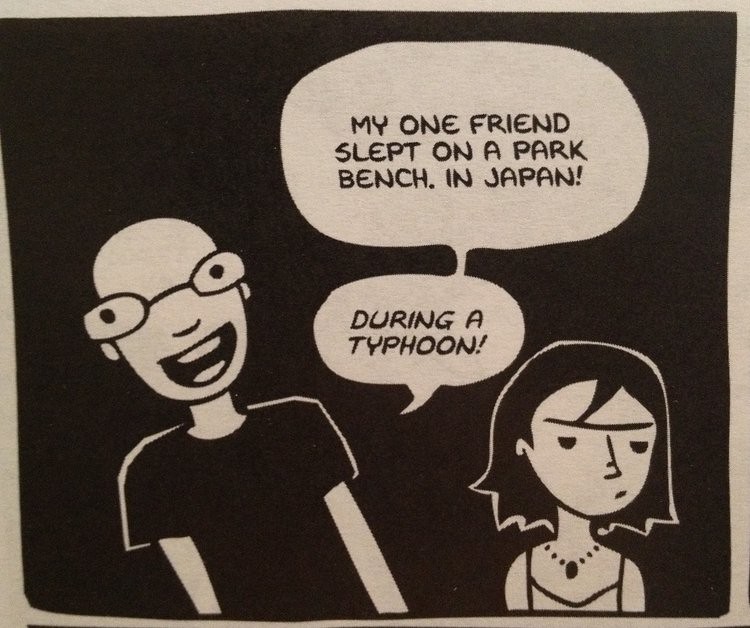
Hilarious!
Autobiographies and anecdotes are a huge part of the graphic novel scene. There’s something about the medium that can turn a little story – “this one time I saw a naked dude in Manarola” – into comedy gold. Comic strips have been turning tiny observations into punchlines for years. A funny face, a fall in the water and a sideways glance convey laughs in a way text can’t. See Kate Beaton‘s Fat Pony for a perfect illustration. It’s just a pony. But oh my god that thing kills me. Nor do the pictures have to just play for laughs. Sadness, loneliness, anger, shock – in short, the wide spectrum of human emotions that we read daly in the faces of others can be illustrated by a good artist telling a story in pictures. Graphic novels solve the story teller’s “I guess you just had to be there” limitation, because they can bring you there.
There’s something more to it than just illustrating a good anecdote though, and I think it’s the added element of fandom. I bought Toronto to Tuscany because I like Kean Soo. We follow celebrities on Twitter or Facebook because somehow, what they ate for breakfast or what music they’re listening to brings us closer to them. If mainstream superhero comics and literary graphic novels have any crossover anymore (outside of sharing retail space) it’s in the obsession of their readers. Graphic novel devotees celebrate their creators almost cultishly. $5 for what you did last summer? Yes please!
In any case, Toronto to Tuscany succeeds in both ways. Funny scenarios are made funnier by Tory & Kean’s alternating illustrations of each others’ silliest moments. My fandom is satisfied by a little glimpse into the private lives of my comic-creating heroes. It’s the kind of little thing that makes comic collecting fun!
February 28, 2012
On Comics for Pre-Schoolers
I never really enjoyed reading comic books to my 3-year-old. I am a comic geek, so I thought I’d love it, but I hadn’t realized the particular challenges of reading word bubbles to the illiterate.
It began the first time I read one of Mo Willems’ Elephant and Piggie books: there’s a lot of dialogue, but without the “…elephant said” and “…piggie said” cues of a picture book (or even a novel), Maggie couldn’t tell who was saying what. So we resort to pointing to the characters as we go through the panels. This is an acceptable beginner tactic, but as comics get more complex, it stops working. Characters sometimes speak from “off panel”. Sound effects come from – where? We muddle through with the aid of funny stage voices and elaborate sound effects, but the activity is exhausting. I didn’t like reading comics.
That didn’t deter my child. Though it was exhausting for me, graphic novels are almost an ideal middle-point for a kid who is interested in the more sophisticated content of a novel, but still wants the visual cues of a picture book. There’s just so much going on within a panel, let alone a page. She has discovered she can “read” the narrative through the progression of panels in a way that picture books don’t especially allow. Kids memorize picture books, but can invent a complex and involved story the very first time they encounter a comic.
We’re deep down the graphic novel rabbit hole now, let me tell you. Thankfully graphic novels for kids are a ballooning media, and Toronto has an exceptionally reliable source in the newly-established Little Island Comics at Bathurst & Bloor. Little Island is an extension of the (best comic book store ever) Beguiling, who have become a world leader in promoting both graphic novels as a literary form and graphic novels for kids. Supplying collections to school libraries is only one of their many above-and-beyond services. They know their stuff.
 Maggie has a (probably genetic) fascination with dragons, and so most of her favourite comics feature them. Last TCAF we picked up a copy of Dragons! Comics and Activities for Kids and she was absolutely smitten with Nogard the Dragon. Not long after we learned that Nogard and his buddies were products of Alec Longstreth’s Isle of Elsi comics, published predominantly in zine format! For those of you who were born on the internet, that’s code for “not available anywhere”. After reading Nogard for the nth time, my husband threw up his arms and flatly refused to read it again, leading to a week-long sulk in which Maggie insisted she didn’t have enough books with “monsters and other beasties” in them. So we thought we’d give Bone a go.
Maggie has a (probably genetic) fascination with dragons, and so most of her favourite comics feature them. Last TCAF we picked up a copy of Dragons! Comics and Activities for Kids and she was absolutely smitten with Nogard the Dragon. Not long after we learned that Nogard and his buddies were products of Alec Longstreth’s Isle of Elsi comics, published predominantly in zine format! For those of you who were born on the internet, that’s code for “not available anywhere”. After reading Nogard for the nth time, my husband threw up his arms and flatly refused to read it again, leading to a week-long sulk in which Maggie insisted she didn’t have enough books with “monsters and other beasties” in them. So we thought we’d give Bone a go.

Bone, for those of you familiar with it, might seem wildly inappropriate for a 3-year-old, but our findings were surprising. Jeff Smith’s story of a trio of marshmallow-fluff little dudes caught in the middle an epic fantasy show-down between dragons, rat men, elder gods and ordinary folk is, until the 6th or 7th book anyway, funny, exciting, and easy to understand. Okay, so Maggie didn’t grasp at all the ins and outs of rigging a cow race, or the tactics of divide and conquer battles, but she knew who was nice, who was mean, and who was funny. We’d read approximately half a trade per night with an increasingly long series recap at the beginning of each session. She’d make us re-read EVERY stupid rat creature scene. There’s a slap-stick element to Bone which is so kid friendly, and the narrow escapes of those early books are exciting without being traumatizing. Add to that a story in which the women are the heroes, the bad guys are kinda cuddly, and the smaller you are, the safer you are, we have the perfect storm of things my kid loves. We re-read the first 6 books of the series four or five times over two months almost to the exclusion of anything else.
 But even a good book gets old when you’ve read it five times in a row, so we had to move on. We engaged Kean Soo’s Jellaby. In a way this is more appropriate for a little kid, but it really depends on what freaks your kid out. There are fewer monsters and less blood and violence than in Bone, but the underlying themes of bullying, lonely kids and, my daughter’s biggest bugaboo, parental separation are pretty intense for a little kid. Maggie just ADORES the first trade. I can’t emphasize this enough. Jellaby is funny, cute, and reassuring to even a tiny child. Who doesn’t want a giant purple secret dragon friend? The second graphic novel delves into darker territory, and Maggie was especially upset by a scene in which the lead character Portia meets her missing father in a dream. But a few weeks after we first read it Maggie tentatively pulled it back off the shelf and went over it herself for hours over several days, then declared she wanted to read it again. The second, third and nth readings were better for her as we explained and unpacked the content. Just as she’d been fascinated by the rat creatures in Bone, Maggie is taken with the “bad” monster in Jellaby: Monster in the City. There’s something fundamental about monsters in a child’s experience. I think it helps them grasp and objectify the bad and scary things in the world. Better seen than unseen and imagined.
But even a good book gets old when you’ve read it five times in a row, so we had to move on. We engaged Kean Soo’s Jellaby. In a way this is more appropriate for a little kid, but it really depends on what freaks your kid out. There are fewer monsters and less blood and violence than in Bone, but the underlying themes of bullying, lonely kids and, my daughter’s biggest bugaboo, parental separation are pretty intense for a little kid. Maggie just ADORES the first trade. I can’t emphasize this enough. Jellaby is funny, cute, and reassuring to even a tiny child. Who doesn’t want a giant purple secret dragon friend? The second graphic novel delves into darker territory, and Maggie was especially upset by a scene in which the lead character Portia meets her missing father in a dream. But a few weeks after we first read it Maggie tentatively pulled it back off the shelf and went over it herself for hours over several days, then declared she wanted to read it again. The second, third and nth readings were better for her as we explained and unpacked the content. Just as she’d been fascinated by the rat creatures in Bone, Maggie is taken with the “bad” monster in Jellaby: Monster in the City. There’s something fundamental about monsters in a child’s experience. I think it helps them grasp and objectify the bad and scary things in the world. Better seen than unseen and imagined.
Our latest craze is Magic Trixie. We assailed Little Island’s Tory Woollcott not long ago for “more dragon comics for pre-schoolers” and came away instead with several superior suggestions. Among them was Jill Thompson’s Magic Trixie comics, the adventures of a little witch girl and her monster-archetype friends. Think Monster High if the characters were eight years old and not a bunch of tramps. This was originally on the plate because the third trade features a dragon, but the success around here is because of the friendly, conflict-free space in the comic. The stories are simple ones about wacky friends doing friendly things and being harmless, something my little one is fond of despite her sympathy for monsters. I think I enjoy this one because it affords a bit of breathing space after the deep themes and heavy unpacking we need to do with other books – Trixie is just plain fluffy, but fun. It also helps that Trixie’s father looks like Maggie’s!
 I have to add a honourable mention for one more book, Rabbit and Bear Paws. Someone left this issue on a table at the Palmerston library and Maggie insisted we take it home. I was in a hurry and groaned a yes even though it seemed to me to be totally beyond her both in terms of length and content. Wow, was I ever wrong! Yes, it’s long. Despite the trim size of the book, it takes a full 45 minutes to read out loud cover to cover. Yes, the content is slightly confusing – 3-year-olds barely grasp the existence of romantic love. But Rabbit and Bear Paws, the lead characters, are also just two kids watching a bigger world around them which they don’t fully understand. While the adults are resolving adult storylines, they are getting into trouble and glimpsing child-sized portions of the bigger whole. The comic emphasizes slapstick, another plus, and Maggie loves a setting there the kids have so much outdoor freedom. It’s a world of trees, water, animals and space to run and adventure. Also, Strawberry is totally badass.
I have to add a honourable mention for one more book, Rabbit and Bear Paws. Someone left this issue on a table at the Palmerston library and Maggie insisted we take it home. I was in a hurry and groaned a yes even though it seemed to me to be totally beyond her both in terms of length and content. Wow, was I ever wrong! Yes, it’s long. Despite the trim size of the book, it takes a full 45 minutes to read out loud cover to cover. Yes, the content is slightly confusing – 3-year-olds barely grasp the existence of romantic love. But Rabbit and Bear Paws, the lead characters, are also just two kids watching a bigger world around them which they don’t fully understand. While the adults are resolving adult storylines, they are getting into trouble and glimpsing child-sized portions of the bigger whole. The comic emphasizes slapstick, another plus, and Maggie loves a setting there the kids have so much outdoor freedom. It’s a world of trees, water, animals and space to run and adventure. Also, Strawberry is totally badass.
We’re extra excited now for TCAF because this year, we have a kid who will unquestionably be up for some of TCAF’s extensive children’s content! And if we can’t wait until then, I’m told Little Island hosts Saturday afternoon “make your own comic” workshops, along with colouring for smaller bodies. Where was this stuff when I was a kid??? Brewing, I guess. It’s an exciting time to be a kid who’s into comics!
May 9, 2011
Eep.
Totally blew the budget at the Toronto Comic Arts Festival. Well, fine! Someone rather eloquently pointed out that ’tis better to buy than to hesitate when it comes to supporting emerging, local, or or self-published creators. This is an economic theory that sounds right to my ears. Should I ever create anything some day I’d certainly appreciate a tendency to buy rather than to hesitate, so let’s just say I’m paying it forward and move on.
What did I get?
Baba Yaga and the Wolf by Tin Can Forest (aka Marek Colek and Pat Shewchuk)
The Next Day by Paul Peterson, Jason Gilmore & John Porcellino
Lose #3 by Michael DeForge (Wish I’d grabbed his now-Doug Wright-winning Spotting Deer as well)
Cat Rackham Loses It! by Steve Wolfhard
Moving Pictures by Kathryn and Stuart Immonen
Entropy #1-6 by Aaron Costain
Catland Empire by Keith Jones
Bigfoot by Pascal Girard
Paying For It by Chester Brown
Sweet Tooth Vols. 1 & 2 by Jeff Lemire
Jeff Lemire Sketch Book by… yah.
Galaxion #2 by Tara Tallan
From Toronto to Tuscany by Kean Soo & um… Tory Woollcott? Forget; apologies.
Northwest Passage by Scott Chantler
Pang, The Wandering Shaolin Monk by Ben Costa
Along with the books and comics was an assortment of bookmarks (I am such a sucker for bookmarks), postcards, stickers, keychains and at least one pair of socks. And I wish I could say I got everything I wanted, but I did not. Time ran out, carrying capacity was reached, and some other logistical difficulties plagued us. I would have bought more prints but for the fact that my house is already full of unframed prints and posters that I can’t work out what to do with. IKEA frames never fit anything! My kingdom for a cheap and easy framing solution.
Needless to say, I had a blast. By the look of Twitter, so did everyone else! There’s no question that this festival is getting stronger as it goes forward, and I am so proud to have it in my own city!
May 6, 2011
Obligatory Pre-TCAF Post 2011
 The Toronto Comic Arts Festival is one of those events that I budget my whole life around for an entire quarter. Which is funny, because if all you know of me is what you learn from this blog, you might not have me pegged as much of a comic geek: I tend to blog about book collecting, book-as-object issues, bookselling and Canadian literature. Comics, a huge subject on their own, I tend to pass over for other things.
The Toronto Comic Arts Festival is one of those events that I budget my whole life around for an entire quarter. Which is funny, because if all you know of me is what you learn from this blog, you might not have me pegged as much of a comic geek: I tend to blog about book collecting, book-as-object issues, bookselling and Canadian literature. Comics, a huge subject on their own, I tend to pass over for other things.
The truth is that I am a bit of an outsider when it comes to comics. I’m aesthetically barren and not especially hip, yet not nerdy enough for mainstream comic geekery. I encounter and consume graphic novels with a kind of layman’s how do they DO that??? awe. There’s no doubt that I love the finished product, but I have little to no insight into the techniques, styles, influences, communities and trends that come together to produce the work.
However, there are a few things I can say for sure. FACT: TCAF is one of the best, if not THE best, non-mainstream comic shows in North America. FACT: Toronto itself has produced a disproportionate number of incredibly influential comic artists and cartoonists, suggesting there’s something to the community here (or maybe just in the water) that’s creating a comic arts nursery. FACT: The Beguiling, the instigator and host of TCAF, is just about the best comic book store ever. FACT: The graphic novel is becoming an increasingly legitimized literary form and TCAF is probably the single best place to learn about and buy the best and brightest of the form.
Last year I posted 5 Things That Will Be Totally Amazing About TCAF 2010, and the year before I discussed The Toronto Comic Arts Festival and Why a Book Collector Should Care. This year I admit I have nothing to add to those points. But the importance of TCAF hasn’t lessened any, so consider this a simple reminder: Get out there! The launch party is tonight, and the Toronto Reference Library will be packed to the rafters with vendors, exhibitors and panelists Saturday and Sunday (May 7th & 8th). The show is free so there’s virtually no reason not to check it out. It’s even kid-friendly. Aside from being a colourful spectacle of the graphic and literary cutting-edge, there’s also a whole rooster of kid programming.
It has been a good spring for book festivals so far!


